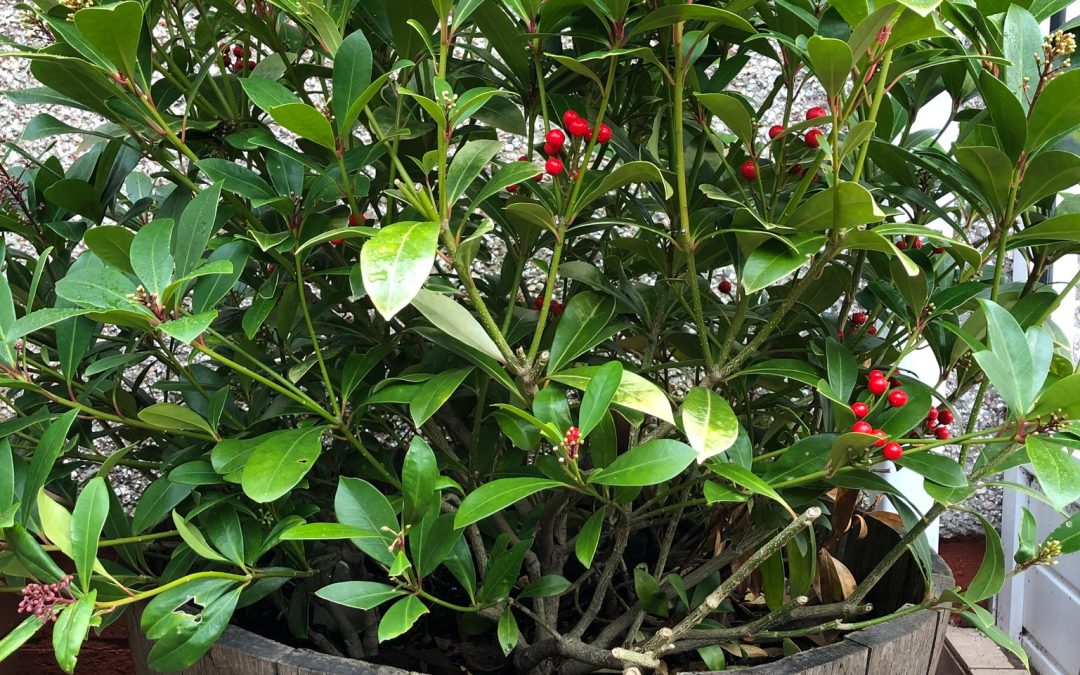January can often be a very cold, frosty and wet month. It can also be a time of snowfall. Here in East Kilbride, where we live, we get Januarys exactly like this. We are just beginning to see Snowdrop bulbs poke their stems out of the soil, and we can see the beginnings of the white flowers, but they are not quite on display just yet. Instead we have these two shrubs to cheer us up – Sarcococca and Skimmia. Both are evergreen with dark green waxy leaves, and both produce berries*, one an almost black colour, and one a bright red. The garden in January is a brighter more colourful place in winter because of these shrubs. We would recommend them for any garden. They look great in pots or planters (as we have them in our garden – see the photos below), as well as planted into a shrub border.
Sarcococca confusa
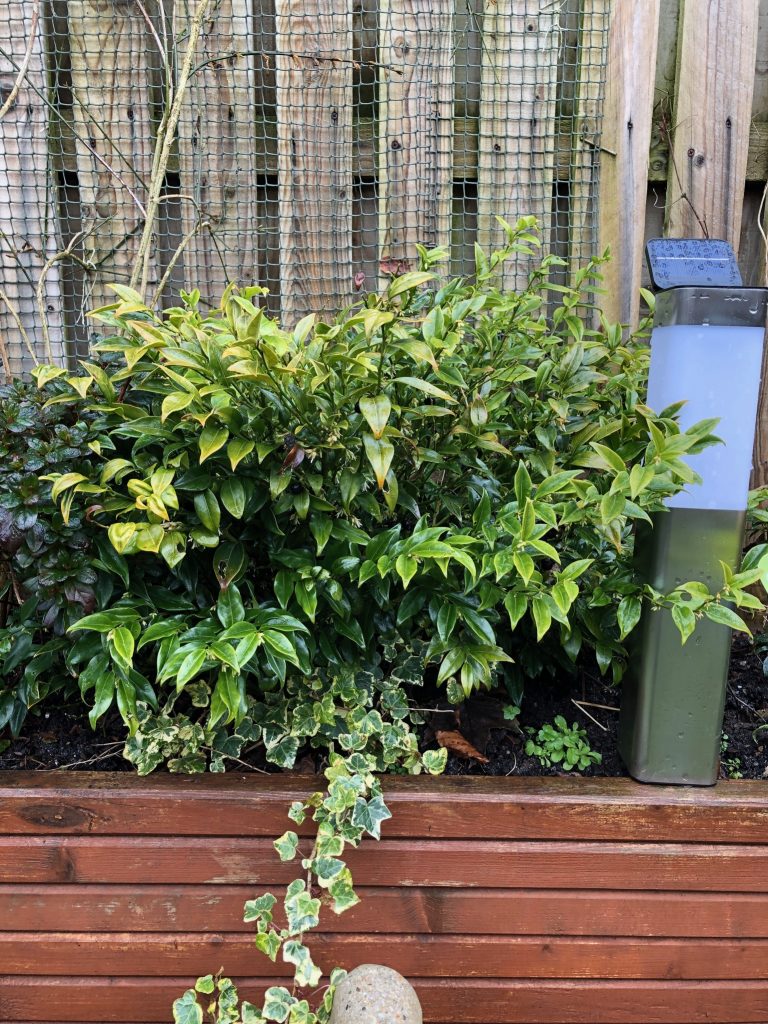
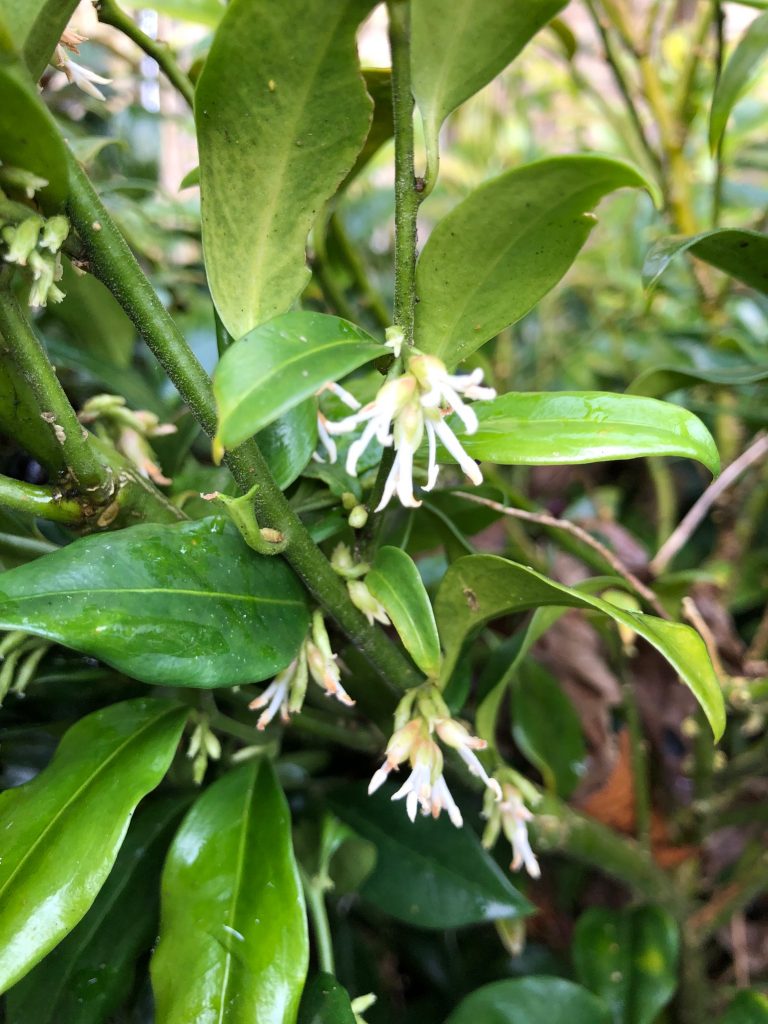
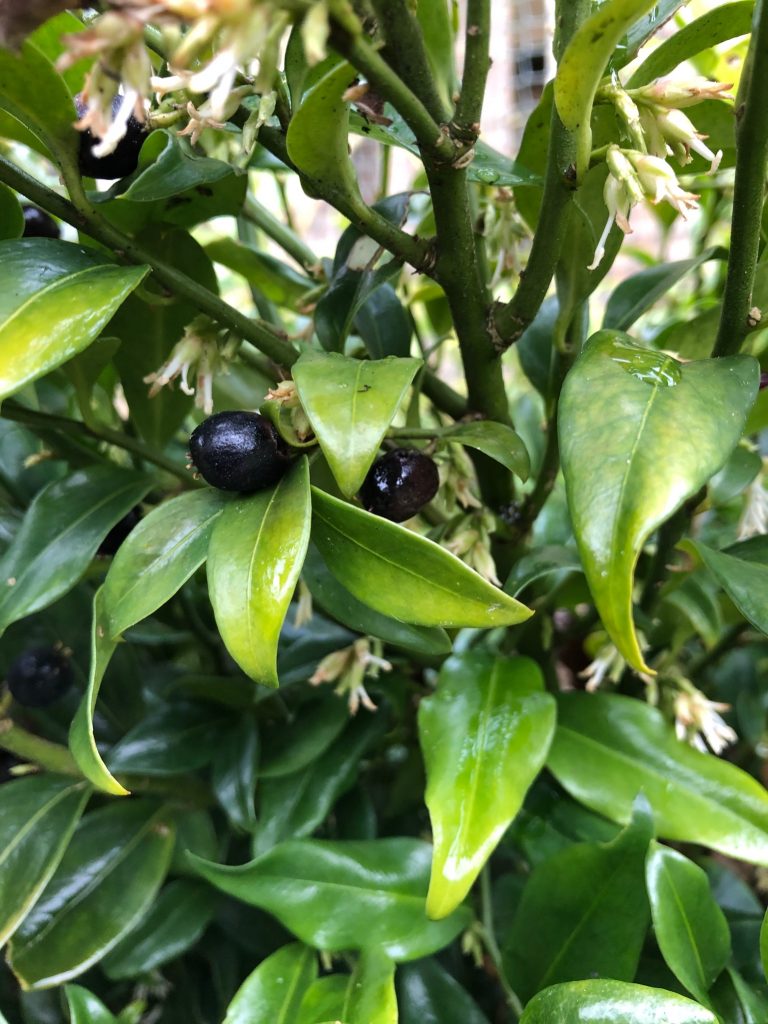
This plant is a shrub (a bush). It grows from roots underground and multiple woody stems above ground. This plant is sometimes referred to as the Christmas box, because its stays evergreen like a box shrub (box is often used for dwarf hedging and topiary). Sarcococca also flowers in winter.
The flowers of the Sarcococca are white and have a sweet scent. The plant also has very dark, almost black berries. Together with its dark green leaves and dense growth habit, this plant makes an ideal addition to the garden, especially during winter when many other plants have either died back, are dormant, or have lost their leaves. Seeing the white flowers, black berries and green leaves in January is an absolute joy at this time of year.
The plant prefers shade, so it probably won’t do so well in full sun in a south facing border. We have always had ours in a large pot or planter, so we have been able to move it around as our fancy takes us. Now that it has grown in size we will probably move it again this year, perhaps back into its own large pot. We bought it as a small 15cm plant. We’ve had it about 2-3 years and its now about 45cm. They don’t grow that fast, and the maximum size it will grow is about 1.5 metres. Like most plants is won’t like being waterlogged, and neither will it like to dry out. It prefers a moist and free draining soil. It’s had no problems with frost damage – it’s a hardy plant. Most years in East Kilbride where we live we get temperatures down to -10°C in winter.
Skimmia Japonica
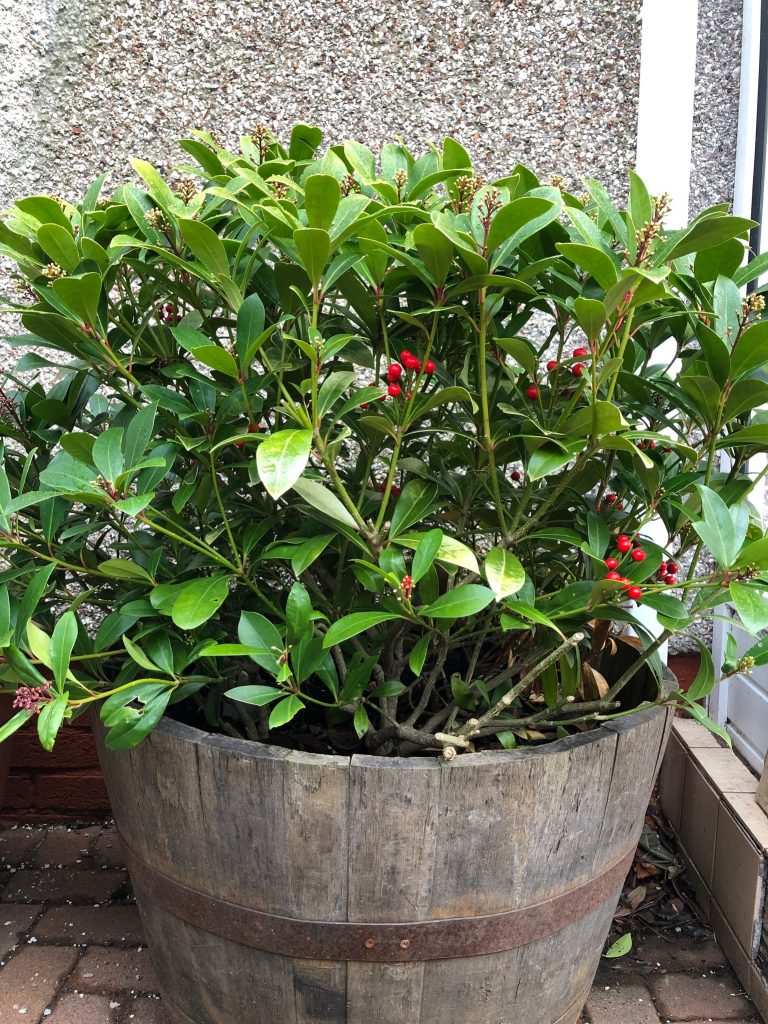
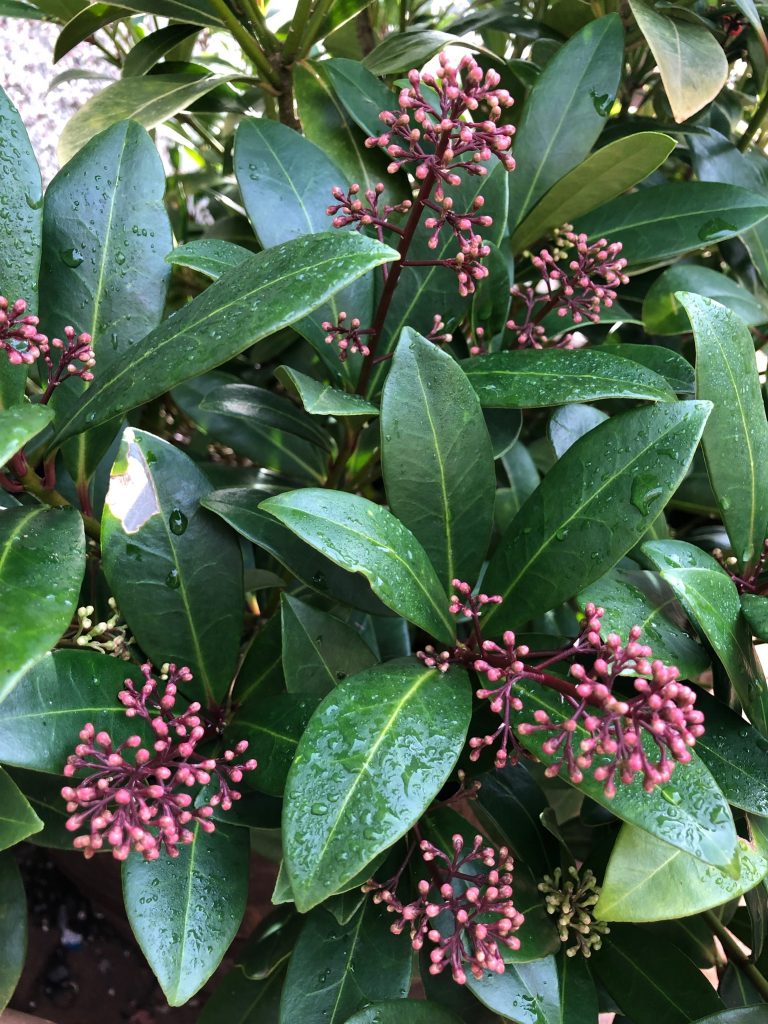
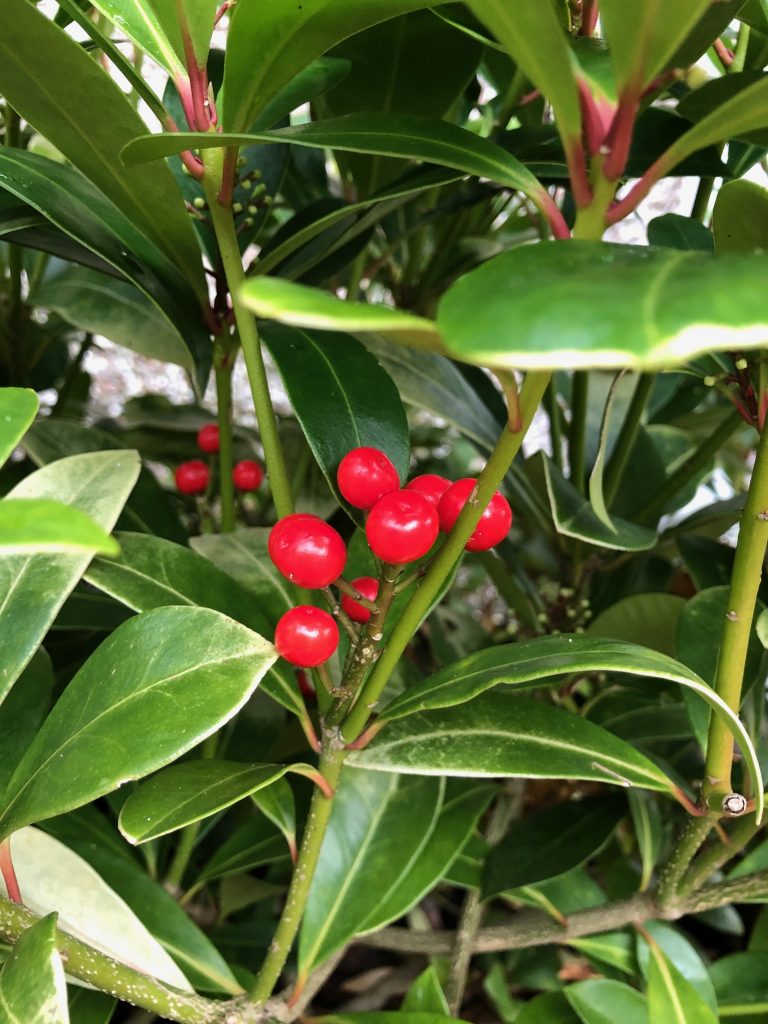
This plant is a shrub (a bush). It grows from roots underground and multiple woody stems above ground. I think Skimmia is a great plant. Some people may think it’s a bit common, but not me.
You may well see Skimmia growing in planters in town centres and other public places (I think that’s why some people think they are common). For me, if you can grow a plant in the middle of a shopping precinct in a town centre, or a roundabout, with minimal care and attention, then it’s worth considering for the garden. When the plant is also evergreen, with dark green waxy leaves, together with bright red berries* and clusters of flower buds in winter, then it’s a real winner for a garden in January.
* Only a female Skimmia variety will produce berries, and it will need a male variety nearby in order to ensure pollination. We actually have 2 female plants and 1 male plant in a large whiskey barrel planter outside our front door (see photos). The male plant is at the back of the pot and the females with their red berries are at the front.
Skimmias prefer shade, so a south facing spot in full sun won’t be ideal. Our front door faces West, and the planter is against the wall near a Cherry tree, so it doesn’t get sun until later in the afternoon. It does so well in this pot in this space that we had to cut it back a little as it was almost blocking the path to the back garden. Skimmias will only grow to around 1 – 1.5m tall and wide, so they aren’t going to be massive. However, if they are planted too near the edge of a path, lawn edge, or at a doorway, they may well spill over like ours did.

